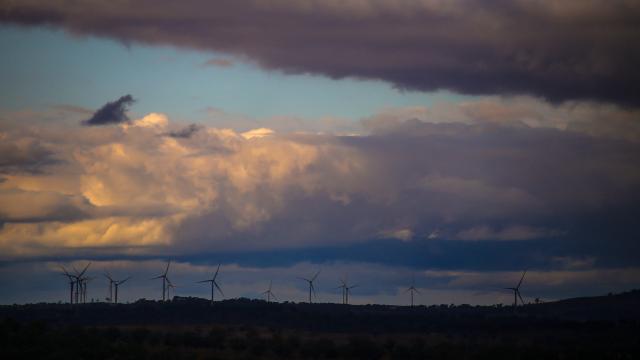The International Energy Agency (IEA) expects the capacity for renewable energy to grow by almost 12 per cent this year. Gotta love us some solar and wind energy! The problem is, the world is still having a dirty love affair with coal.
The agency released these new projects this week, noting that this growth is the fastest the industry has seen since 2015.
The findings are much welcome: Renewables saw virtually no growth between 2017 and 2018. And in the era of the climate crisis, the industry needs to grow if our energy grid can shift toward cleaner energy without government intervention.
This year’s increase amounts to some 200 gigawatts. However, as the IEA makes clear, the capacity for renewables needs to grow more than 300 gigawatts a year by 2030 globally if we’re going to actually meet the goals the Paris Agreement lays out.
“These latest numbers give us many reasons to celebrate: Renewable electricity additions are now growing at their fastest pace in four years after a disappointing 2018,” said IEA Executive Director Fatih Birol, in a statement. “We are witnessing a drastic decline in the cost of solar power together with strong growth in onshore wind, and offshore wind is showing encouraging signs.”
Around the world, we’re seeing more investment in renewable energy — whether it’s the largest offshore wind farm that came online in the UK earlier this year or the Standing Rock Sioux Tribe launching a solar farm in North Dakota.
Even multinational corporations are signing on. Google just announced this week that it will purchase 1600 megawatts (or 1.6 gigawatts) of wind and solar, which would be the largest purchase of clean energy from a single company.
It’s encouraging, especially as the science shows that time is running out to address the climate crisis.
Still, this only one side of the coin. Another report out this week reminds us that many countries are still growing their dependence on coal.
Germany-based environmental group Urgewald published an update to its list that tracks coal expansion and found that, if all the planned coal projects actually happen, they’ll add more than 579 gigawatts to the global grid. That’s a nearly 29 per cent increase to current coal capacity — and that’s the complete opposite of what is needed to prevent further climate disaster.
However, in countries such as Bangladesh, Vietnam and Indonesia, coal is often the most affordable option for increasing energy access. This energy is only affordable, though, because our current economic system fails to account for the externalities of extracting and burning coal.
There are health costs related to pollution, as well as costs related to killing our planet! Yet our economic models fail to examine these impacts. A study published earlier this year found that, in the US, replacing coal plants with solar facilities would save money.
Put simply, world powers have a lot of work to do. As leaders meet next week to talk climate change at the UN Climate Action Summit, let’s hope they figure out a way to ensure that all energy infrastructure moving forward is good for both the planet and public health.
